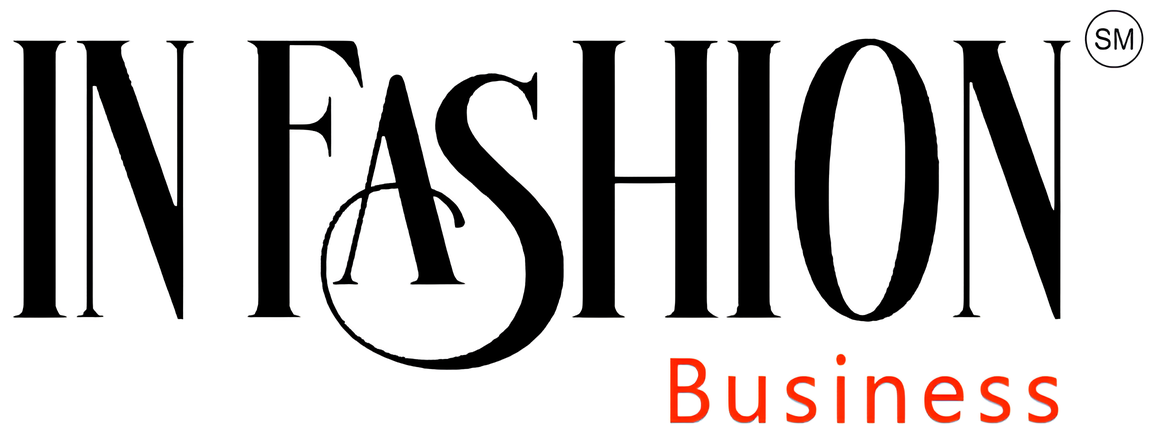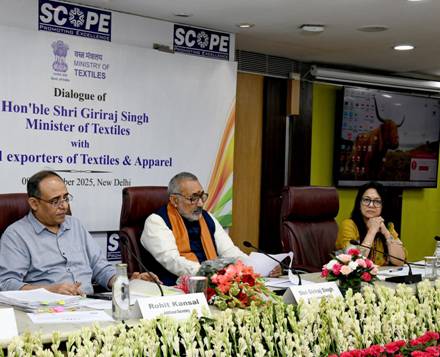MINISTRY OF TEXTILES UNION MINISTER MSME EXPORTERS CONSULTATIVE MEETING GDP EXPORTS ATMANIRBHAR BHARAT SWADESHI GLOBAL MARKETS GST REFORMS VIRASAT BHI VIKAS BHI 5F FORMULA VOCAL FOR LOCAL HANDLOOMS HANDICRAFTS GI-TAGGED PRODUCTS PLI SCHEME NATIONAL
NEW DELHI, INDIA
By IFAB MEDIA - NEWS BUREAU - September 10, 2025 | 245 6 minutes read
The Ministry of Textiles today convened a wide-ranging consultative meeting with Micro, small and medium (MSME) textile exporters from across the textile and apparel value chain, chaired by the Union Minister of Textiles. This was the second such meeting, following the national-level consultation with leading exporters held on 13th August 2025. The Additional Secretary (Textiles) and the Trade Advisor were also present during the deliberations.
Opening the discussions, the Union Minister recalled that India’s textile sector—valued at USD 179 billion with exports of USD 37.75 billion—remains one of the proudest symbols of India’s economic strength and cultural heritage. Contributing nearly 2% to GDP, the sector sustains India’s position as the 6th largest exporter globally with a 4.1% share in world trade. With exports to over 220 countries and more than 520 districts actively engaged, Indian textiles embody the vision of Atmanirbhar Bharat and the timeless spirit of Swadeshi.
Resilient Performance Amid Global Challenges
Despite global volatility and steep tariffs imposed by certain partners, India’s textiles have displayed resilience:
- - July 2025 exports grew 5.37% to USD 3.10 billion.
- - April–July 2025 exports reached USD 12.18 billion, reflecting 3.87% year-on-year growth.
- - Segment-wise growth: readymade garments (+7.87%), carpets (+3.57%), jute products (+15.78%), with handicrafts and MMF textiles maintaining steady performance.
The Minister drew attention to the strong first-quarter export growth in key partner countries, notably Japan (+17.9%), United Kingdom (+7.39%), UAE (+9.62%), and Australia (+1.74%). He underlined that these positive trends in major FTA partner countries reaffirm India’s ability to capture a greater share of the USD 590 billion global textile market. He stressed the urgent need for strategic diversification into 40 identified global markets, while simultaneously deepening domestic demand, in line with the Hon’ble Prime Minister’s clarion call for “Vocal for Local.”
GST Reforms – A Game-Changer
The Union Minister highlighted the transformative outcomes of the 56th GST Council meeting (3rd September 2025), which ushered in second-generation GST rationalisation across the textile value chain. These reforms will reduce distortions, lower costs, stimulate demand, and enhance export competitiveness.
Described by the Hon’ble Prime Minister in his Independence Day Address as part of the Next-Generation Citizen-Centric GST Evolution, these reforms reflect the philosophy of “Virasat Bhi, Vikas Bhi”—preserving India’s heritage while enabling modern growth. The Minister reiterated the 5F formula – Farm to Fibre to Factory to Fashion to Foreign—as the roadmap to India’s emergence as a global textile powerhouse.
Government–Industry Partnership
MSME Textile exporters welcomed the reforms and emphasised the need for continued fiscal support, simplified compliance, and stronger global branding of handlooms, handicrafts, and GI-tagged Swadeshi products.
The Union Minister further encouraged the creation of warehouses in key global markets such as the EU, US, and other strategic destinations, particularly to promote handicrafts, handlooms, and lifestyle products through e-commerce channels. This, he underlined, would enable Indian producers to directly reach international consumers, reduce delivery timelines, and enhance India’s competitiveness in premium markets.
The Government has already rolled out targeted measures to strengthen competitiveness:
- - Import duty exemption on cotton till 31st December 2025.
- - Extension of export obligation under Advance Authorisation from 6 to 18 months in QCO related cases .
- - PLI scheme application window extended to facilitate fresh investments.
- - Four industry-led committees constituted on diversification, fiscal support, structural reforms, and innovation.
Vision 2030 – India’s Global Leadership
Concluding the meeting, the Union Minister reaffirmed the Government’s commitment to Vision 2030, which aims for:
- - USD 100 billion textile exports
- - USD 250 billion domestic market
He emphasised that these goals will be realised through market diversification, deeper domestic consumption, structural reforms, innovation, and a reinvigorated Swadeshi movement showcasing the strength of artisans, weavers, MSMEs, and women entrepreneurs.
The Union Minister concluded with conviction that India’s textile industry stands at the threshold of a glorious future under the dynamic leadership of the Hon’ble Prime Minister. With MSMEs at the heart of policy priorities, and with India’s heritage seamlessly aligned with modern competitiveness, the sector is poised to emerge as a global leader across the textile value chain—from farm to fibre, factory to fashion, and fashion to foreign.











